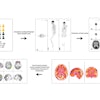
The lack of Medicare coverage for screening CT colonography appears to affect uptake of the exam among low-income beneficiaries, a study published on July 19 in the American Journal of Roentgenology has found.
The study findings underscore that Medicare payment for screening CT colonography (CTC) could alleviate healthcare discrepancies, wrote a team led by Eric Christensen, PhD, of the Harvey L. Neiman Health Policy Institute in Reston, VA.
"Medicare coverage of CTC could reduce income-based disparities for individuals avoiding optical colonoscopy due to invasiveness, need for anesthesia, or complication risk," the authors noted.
Colorectal cancer is the second leading cause of cancer deaths in the U.S., the group explained. Professional organizations such as the U.S. Preventive Services Task Force, the American College of Gastroenterology, and the American Cancer Society recommend optical colonoscopy every 10 years, CTC every five years, and sigmoidoscopy every five years, as well as a variety of annual stool-based tests. All of these screening strategies are covered by Medicare except CTC.
Optical colonoscopy is the most sensitive test, but it is also invasive, necessitates anesthesia, and carries a higher risk of complications, Christensen and colleagues noted. Because of these downsides, patients may avoid screening altogether.
Christensen's team investigated factors that could influence uptake of colon cancer screening, particularly CTC via a study that used data from the Centers for Medicare and Medicaid Services Research Identifiable Files from between January 2011 and December 2020. The dataset consisted of 785,103 colorectal cancer screenings, of which 645 were screening for CTC. The research evaluated patients' likelihood of undergoing colorectal cancer screening tests in relation to factors such as age, geographical environment (urban or rural), race and ethnicity, and income.
The strongest factor for screening CTC compliance was income, with individuals who lived in higher-income areas having much higher odds of undergoing CTC. Geographic location was also statistically significant, while race was not.
| Factors influencing the odds of undergoing screening CTC | |
| Factor | Odds ratio (with 1 as reference) |
| Income (p = 0.001 for whole factor category) | |
| ≥$100,000 | 5.73 |
| <$25,000 | 1.84 |
| Geographic location (p <0.001 for whole factor category) | |
| Urban | 0.52 |
| Rural | 0.65 |
| Race (p = 0.09 for whole factor category) | |
| Hispanic | 1 |
| Black | 1.08 |
"Individuals living in communities with per capita income of $100,000 or more were 473% more likely to undergo screening CTC compared to those living in communities with per capita income of less than $25,000," the team reported.
Christensen attributed the study results to the absence of Medicare coverage, noting that this policy may disproportionately affect low-income individuals.
"Lack of Medicare coverage may contribute to greater income-based differences in use of screening CTC than of other recommended screening strategies or of diagnostic CTC," they concluded.
The complete study can be found here.





















